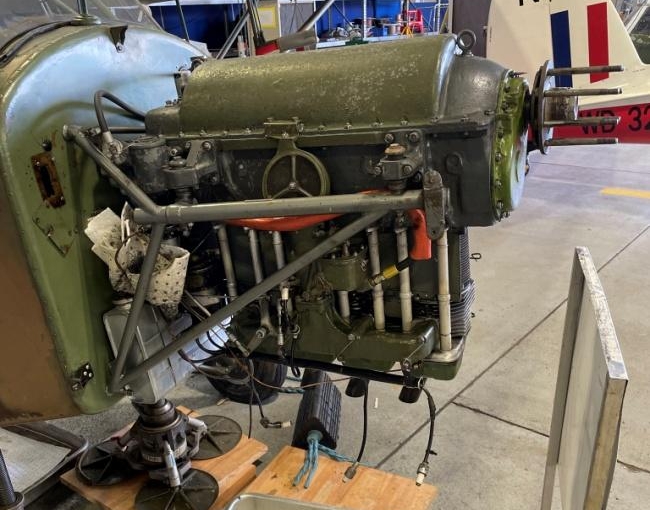Our Auster Mk1 (LB 321) joined the flight late 2020, flying into Middle Wallop from Netheravon via the services of a Light Aircraft Association Pilot. Since then, having completed an initial inspection, we decided to ground the aircraft pending a full technical review and associated reconditioning of the whole aircraft.
Reconditioning an aircraft that first saw Service in 1942 is an interesting challenge, this exacerbated by a very limited set of technical publications and few sources of spare parts and special tools. The aim of the reconditioning activity is to restore the aircraft to a safe, airworthy and reliable operating condition – and not necessarily to refurbish; so we retain the “Barn-Fresh” aged-patina that suits an aircraft of this vintage.
The early technical activity has been focussed on issues with a long-lead supply-solution. First out has been all the control cables, bell-cranks and flight control linkages with the cables now away for a pattern replacement by a specialist supplier. In the meantime, Dave Currie is re-working every element of the control system with the mantra “no-play shall remain” to the fore. Also away early was the engine mounting bushes with drawings locally produced and another specialist supplier now making us four new engine mounts.
The wooden propeller provided its own conundrum – we established it was the right diameter and pitch but beyond that, no history was available for this rather essential part. Fortunately, there a good supply options for us to have the propeller inspected and reconditioned and this will be a relief for all – especially those at the sharp end when swinging the prop to start the engine.
Following a lot of research, we have established the aircraft is fitted with its third engine – but critically the engine is the original specification Blackburn Cirrus Minor 1. This engine type has not enjoyed universal praise for its reliability and performance and is sometimes replaced with a modern unit. Thankfully, we retain the correct provenance and despite the slightly arthritic performance, we are delighted that the engine is age-correct for the aircraft. Happily, we have established that the engine was last overhauled 126 hours ago so given our estimated use; the challenge of the next rebuild is pushed firmly into the long grass.
In amongst all of the Service Instructions to be checked and satisfied, we found the requirement to crack detect the forward end of the crankshaft. This Instruction was originally issued in 1966 and given the resistance being put up by the propeller hub (which has to be removed to do the job), I’m not sure this has been completed recently. All attempts to remove the hub failed but with a ton of perseverance and a bit of good luck, we have sourced an original hub puller tool. This (enormous) specially-designed tool perhaps underlines the futility of our previous actions to use a universal puller and a large hammer to get the hub off.

Blackburn Cirrus Minor 1 – reluctant propeller hub top RHS
Finally for now, we have to modify the aircraft to be able to safely operate in a modern air-environment and this needs a retro-fit of a VHF radio and Transponder unit. We strive to install this sensitively to not overwhelm the (very basic) cockpit while making sure the pilots can see and access the instruments safely. The original cockpit facia has disintegrated and we are making a new one at the HAAF to also include the new instruments. We have made a new parcel shelf to be fitted behind the pilot seats and this will be repurposed to carry all the necessary avionic parts and a pair of batteries to power the systems. Once the electrical installation is complete, we will need to make a new fabric shroud for the tray interface to the airframe and are sourcing age-correct material and suitable trimming materials to finish this job.

Original parcel shelf and fabric shroud (very rotten)

Original Auster Mk1 cockpit and instruments
The aim is to complete the recondition work by Spring 2023 and if our specialist suppliers keep to their estimates, there is a reasonable chance of making this date. As ever, the threat of emerging work looms but we are trying to anticipate the technical challenges before they become (schedule) issues. We’ll update progress on this programme later in the year.

